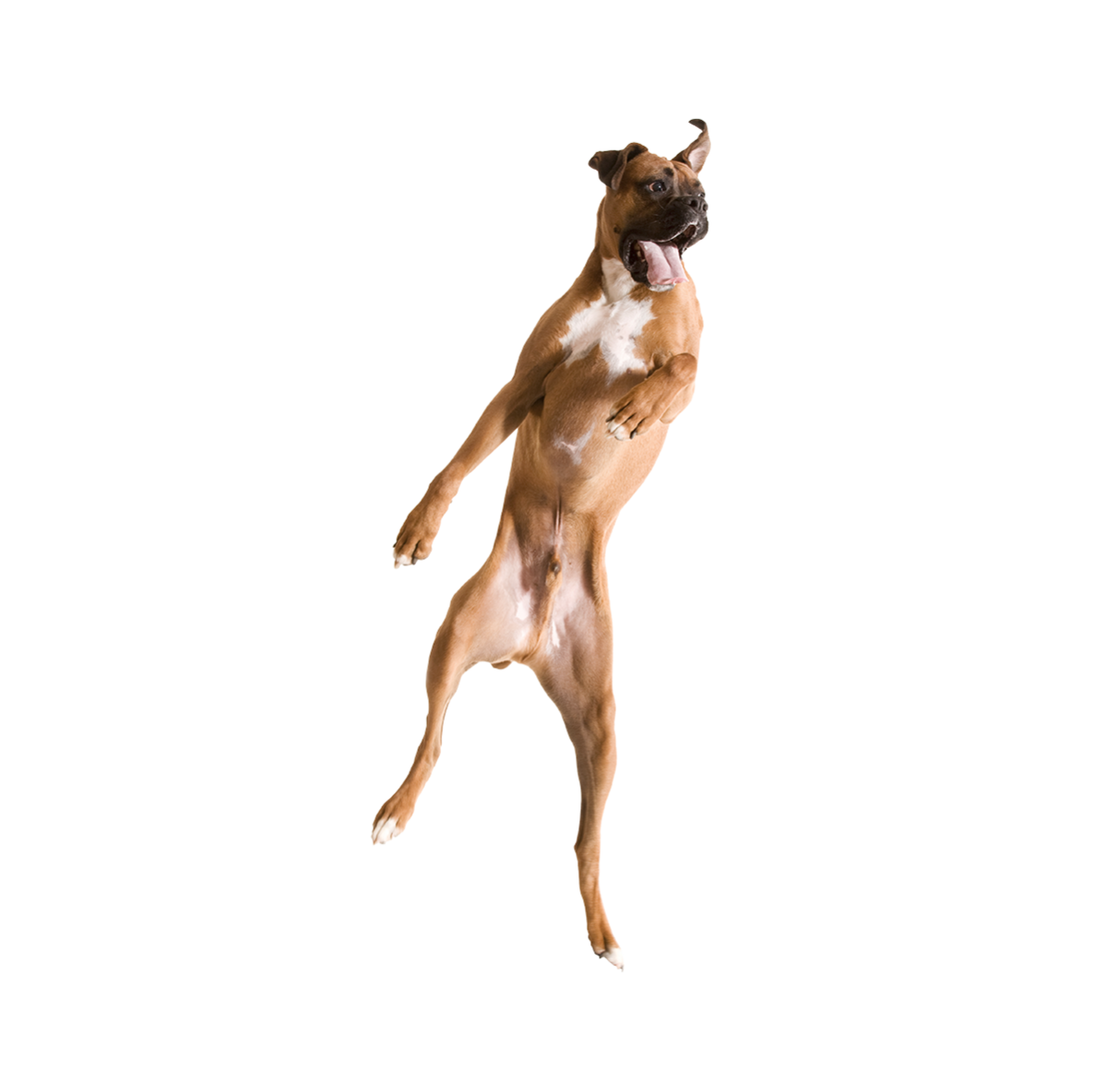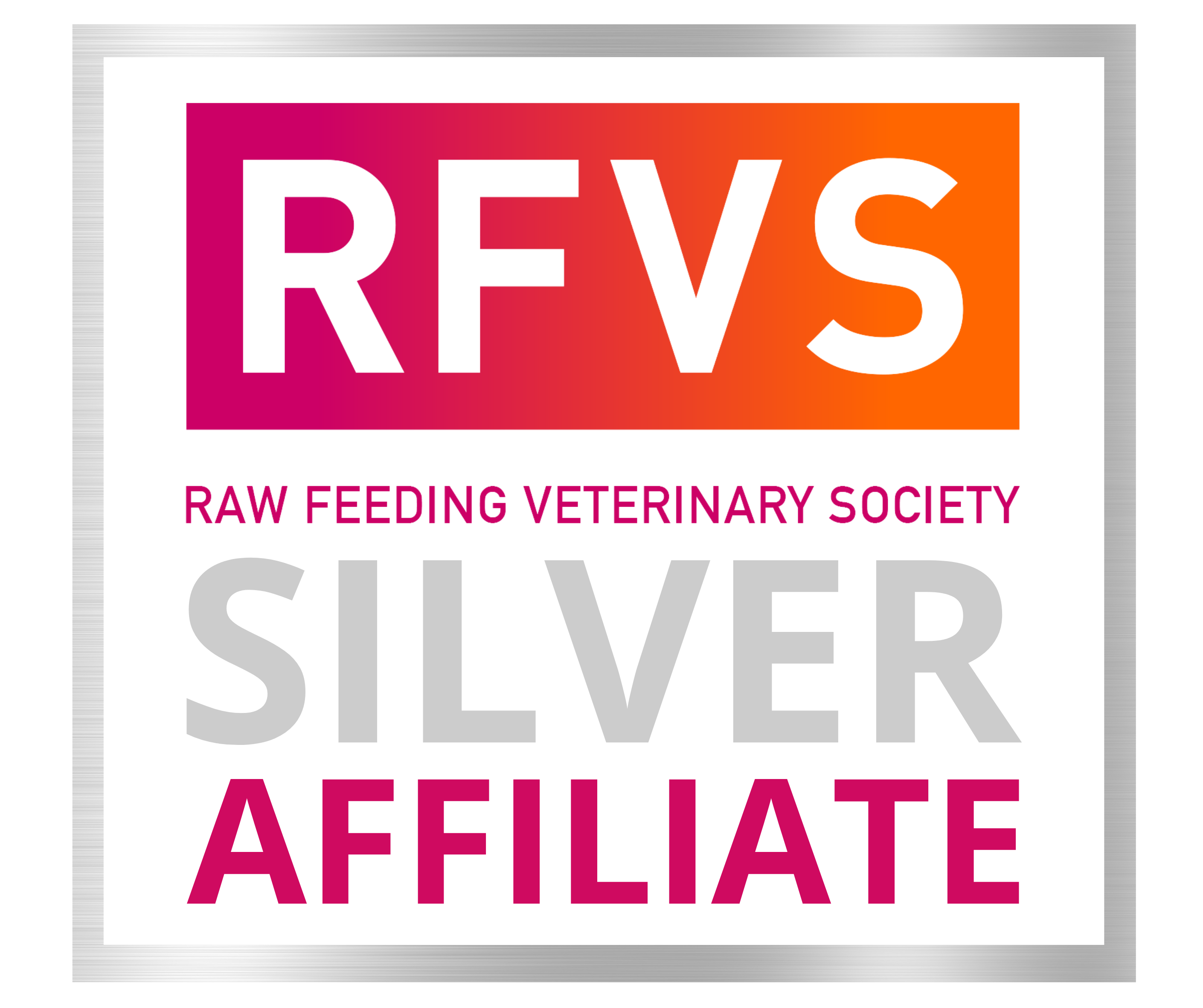Brachycephalic Dogs
WHAT IS BRACHYCEPHALIC SYNDROME?
Brachycephalic syndrome is a combination of upper airway disorders commonly seen in brachycephalic breeds (such as English Bulldogs, Boston Terriers and Pugs). Features associated with this syndrome include narrow nostrils, short noses, an elongated soft palate, shallow eye sockets and altered throat structures.
Selection for these exaggerated features has created marked challenges for some dogs. In recognition of this, we recommend some caution with the usual transitioning process to a raw diet.
Brachycephalic breeds have an increased risk for choking and respiratory issues. They can choke on or inhale any small pieces of food or objects - so we advise a modified transition to a raw diet.
BEFORE YOU START
Prior to any dietary changes, allow a good couple of weeks for your puppy or new dog to settle into their new environment, so that they do not have too many changes at once. Vaccinations, parasite treatments, and changes to diet should all be carefully planned and spaced out. Diet changes should not be rushed.
We strongly recommend that you communicate any diet changes to your vet. We are happy to answer any questions they might have.
Keep other pets and people away from your puppy when they are eating so that they don’t feel pressured and hurried. Feed them in the same quiet, undisturbed spot every day. Supervise them (from a distance) while they eat.
HOW TO TRANSITION A BRACHYCEPHALIC DOG
Begin with poached meat and bone broth (guidelines available from our staff). After 3-4 days on poached meat and broth, we can progress to a raw food diet in the following way:
- Gradually introduce RE Lamb Mix (or similar minced raw meaty bones and tripe mix) by adding progressively more mince at each meal, and lessening the amount of cooled poached meat. Never heat/cook any foods containing bone.
- Use only Freeze Dried Green Tripe Treats for a treat option during this time.
- If there are any digestive concerns during this phase, contact our staff to determine how to work through this.
THINGS TO KNOW
Regardless of whether you are feeding a raw diet, or a processed diet, if your brachycephalic puppy vomits after eating you must contact your vet immediately due to the risk of inhalation pneumonia. Vomiting may be due to a number of reasons - including recent vaccinations, oral flea medication or a worm tablet, a change in food, ingestion of a non-food item, or even vigorous exercise after eating. Alert your vet to any of these possibilities.
Be cautious about feeding whole bones to brachycephalics. Refer to our current bone safety guidelines and if you feel nervous about feeding bones, then please do not feed them - your puppy will sense your distress.
Raw meaty bones should be too big to swallow whole. Monitor your dog while they chew.
BROTH & POACHED MEAT PHASE
It may be appropriate for your pet to follow on from this with our Gut Healing Protocol (chat to our staff in store or online), however it is important that you discuss this with your regular veterinarian before beginning.
With poached meat and broth, stools are usually quite soft and jelly-like. There shouldn’t be any straining to pass stools, and there are usually 1-2 per day. There may be no stools on some days.
Keep a diary to monitor: energy levels, appetite, stools, wind, tummy rumbles, burping etc.
Occasionally, a dog or cat does not do well on broth, in which case we may advise a brief period of meat poached in just enough water to cover the meat.
Initially, the amount to feed for adults is 1-2% of their body weight in poached meat per day. This small amount should be gentle on the gut - it is better to underwhelm the gut initially. Monitor your pets weight, appetite, and stools - you can increase the amount that you are feeding to suit (a small amount of weight loss may occur, please seek advice if you are concerned).
Ideal fillets or meat cubes to use include turkey, rabbit, veal, alpaca (easily digestible - trim off visible fat if it is a fattier piece).
Cut the meat into bite size pieces prior to poaching, poach meat gently in broth (or the minimum amount of water), for 5-10 minutes. Please check meat cubes for any bone fragments and remove.
If your pet has a history of pancreatitis or severe digestive issues, scrape the fat layer from the broth (it is easiest to do while broth is still chilled). Broth is not high in fat, however these pets are generally on a fat-restricted protocol, so we do not wish to add extra fat.
SAFE BONE FEEDING FOR BRACHYCEPHALIC BREEDS
Raw meaty bones can provide your dog or cat with species-appropriate nutrition, dental benefits and behavioural stimulation. Consider if raw meaty bones are right for your brachycephalic. If you choose to feed them, be sure to follow our safety guidelines:
Size of bone
- Dogs and cats need to rip, tear and chew to get the full benefit of raw meaty bones. Choose bones that are big enough to be chewed and crunched, but not swallowed whole.
- Small bones can be a choking hazard and may cause significant oral trauma.
Type of bone
- Avoid large, weight bearing bones (such as cannon bones), as these may fracture teeth.
- Choose bones with plenty of meat or soft tissue on them.
- Cooked bones splinter easily and are dangerous - never feed them to your dog or cat.
Supervise your dog
- Always supervise dogs when you’ve given them a bone.
- Avoid situations that might encourage a dog to gulp their bone. We recommend separating even the best of dog-friends when offering bones.
The rest of the diet
- Raw meaty bones are not a complete diet on their own. Talk to us to learn about feeding a balanced raw diet.
- Feed some green tripe with bones, to aid digestion.
Whole bones may not be appropriate for the following pets
- Old, sick, pregnant, lactating and medicated pets may have a reduced ability to digest whole bones. Please talk to us before you start feeding bones to these pets.
- Pets with a history of restorative dental work may need to avoid whole bones too.
- Please talk to us if your pet falls into any of these categories, or if you have any concerns.


